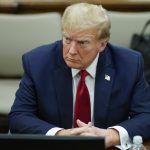Cocaine Discovered at White House Raises Concerns About Security
The White House was placed on lockdown after an unidentified item was found on Sunday, and it has now been confirmed that the item was cocaine, according to the U.S. Secret Service. The discovery was made during a routine patrol, prompting an immediate evacuation of the premises.
Preliminary tests conducted by the Washington, D.C., Fire Department on-site confirmed that the substance was cocaine hydrochloride, as reported by The Washington Post. The incident has raised serious questions about the security measures and operations at the White House, and an ongoing investigation is underway to determine how the illegal drug entered the highly secure premises.
At this time, specific details about the packaging and the exact location where the substance was found have not been disclosed. It is noteworthy that this incident occurred just two days after Hunter Biden, President Joe Biden’s son, visited the White House. Both Hunter Biden and the President have repeatedly stated that Hunter has overcome his addiction.
Hunter Biden recently reached a plea deal with the U.S. Department of Justice, avoiding jail time by admitting to lying on a federal form during a firearm purchase. As part of the plea deal, he pleaded guilty to tax misdemeanors, reducing the charges of felony tax evasion.
The investigation into the incident is being led by the Uniformed Division of the Secret Service, in collaboration with the D.C. Fire and EMS Department. The D.C. Fire Department has determined that the substance does not pose an immediate threat.
The Secret Service remains on high alert following this discovery, underscoring the seriousness of the situation. A comprehensive report is expected to be released to shed light on the nature and extent of this security breach.
As of now, the White House has not issued an official statement regarding the incident.
This incident serves as a reminder of the ongoing battle against drugs in the United States and emphasizes the need for comprehensive strategies to combat drug use and trafficking, even in seemingly secure locations.











